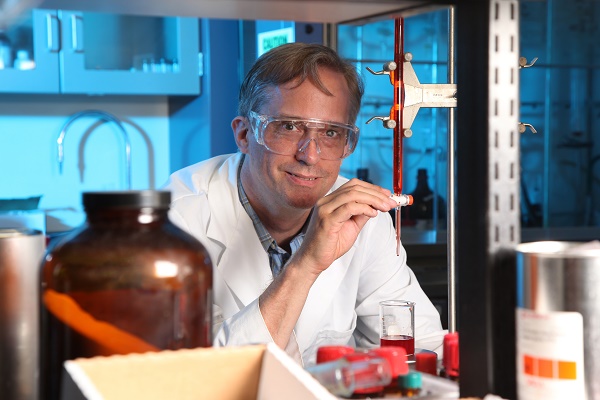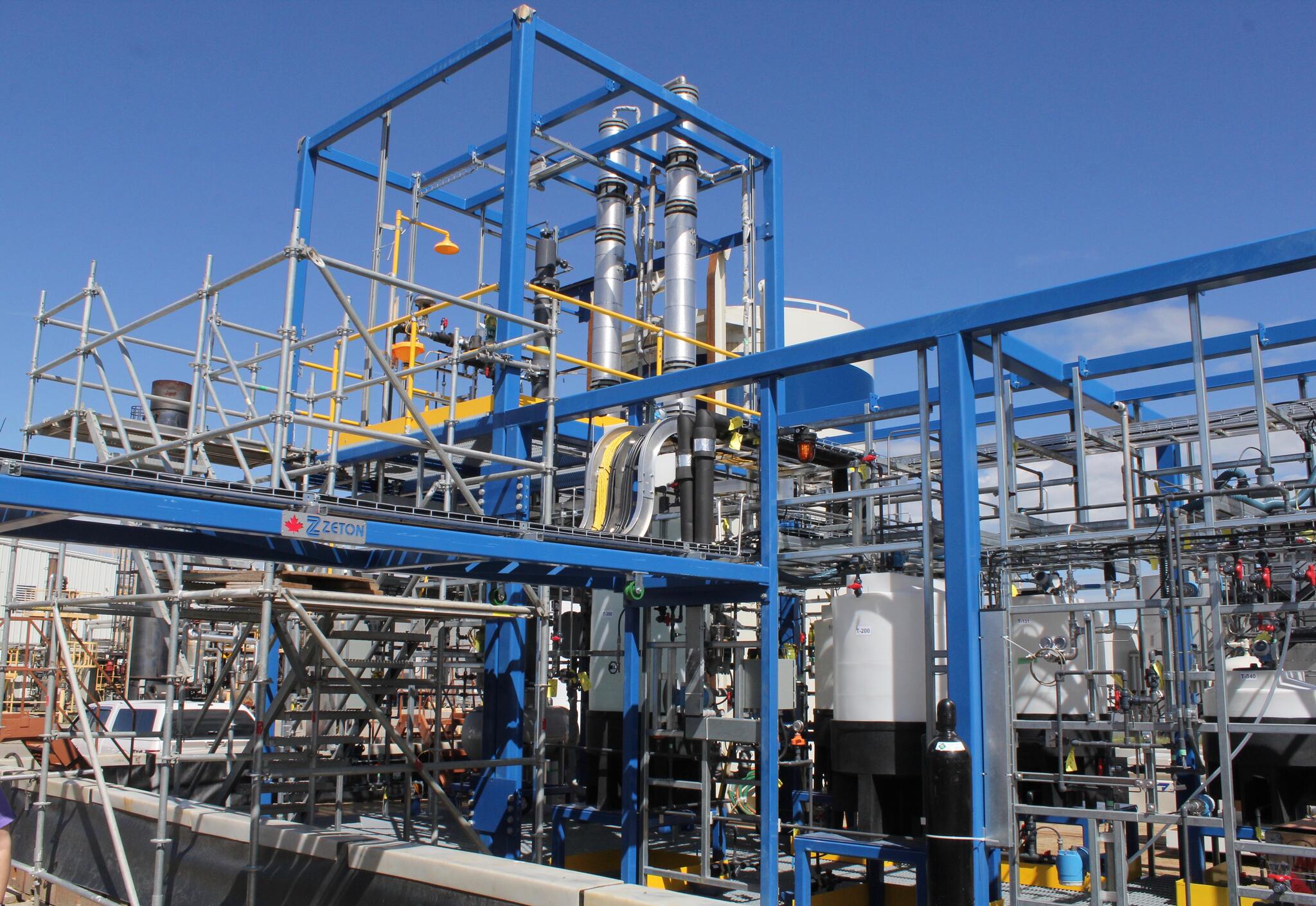When a technology goes from lab to market, it is typically many years in the making rather than an overnight success. Such is true for the journey of the switchable water technology developed by a Queen’s University research team led by Professor Philip Jessop and Forward Water Technologies, the company that is now advancing its forward osmosis clean-water technology toward full commercialization.

“This is not like a software app, where startup costs can be bootstrapped. This type of technology requires large scale labs or chemical plants to be developed to scale. Going from the lab to a commercial market is really a long haul,” says Dr. Jessop, Queen’s Professor of Chemistry.
The initial research, which focused on CO2-switchable solvents, was first funded by an NSERC Discovery Grant and developed in Dr. Jessop’s Queen’s lab in 2004. Findings of this research was published in Nature in 2005. Building on this, CO2-switchable surfactants, which functioned in water, were developed in 2005 and published in Science in 2006. As the research process continued, Dr. Jessop had the idea of a switchable water and in late 2009, the idea was tested, the technology was disclosed to PARTEQ Innovations (now part of Queen’s Partnerships and Innovation) and then the technology was licensed to GreenCentre Canada (GCC), a Centre of Excellence for Commercialization and Research, help develop it further in its lab.
The first paper on switchable water was published in 2010.
What is switchable water?
“The concept is simple, efficient and cost-effective,” says Dr. Jessop. A salt solution is made by reacting an additive with CO2 in carbonated water. Wastewater is then placed on one side of a membrane and the salt solution on the other side. That causes freshwater to be pulled out of the wastewater, across the membrane, and into the salt solution. Once that is complete, the salt is removed from the extracted water by removing its two components (the CO2 and the additive), leaving behind clean water. Those two components are captured and returned to the forward osmosis unit for complete reagent recycling in a closed-loop process.
In 2009, PARTEQ formed GreenCentre Canada to help bring chemical technologies, discovered by researchers at Canadian universities, that were still in the research phase to a point in development where a company might want to license the technology and further develop it.
“When GreenCentre Canada was first created, a professor could approach the Centre and say, ‘We have this technology, could you help us find an application?” says Dr. Jessop. The switchable water technology was further developed by GCC, including variations being commercialized by FWT. GCC helped to find applications and where within various industries the technology could be best used.
Originally used to remove organic materials out of water in the oil and gas industry, GCC helped to find other applications for the technology.
“I can say it might be possible to do this or that with the technology but it’s the people at GCC and Queen’s Partnerships and Innovation that can say there is an industrial opportunity or need,” says Dr. Jessop.
It was this determination of the industrial need that led to GCC making significant investments in the development of Dr. Jessop’s technology and, in 2012, Forward Water Technologies was founded.

For Dr. Howie Honeyman, then acting CTO of GCC, working on a startup was not a new experience. Having previously worked on two startups, Howie could see there was great potential. He left GCC and joined Forward Water Technologies as CEO to lead fundraising and further the development of the technology.
“While I enjoyed my time with GreenCentre and I found the experience valuable, I realized that what I really wanted was to be actively involved. I like to do things rather than oversee them,” says Dr. Honeyman of his reasons for joining FWT. With the company now licensing the technology, it was ready for the next stage – the actual building of filtration units.
“We needed to show the broader engineering community that the bench chemistry could be scaled to a bigger project,” says Howie. This entailed building an engineering skid at a facility in Mississauga, which demonstrated that 1,000 litres of water could be treated per day. This gave FWT the leverage to show that the technology could be significantly scaled. The FWT team then attracted private funding to build a full-scale pilot project with a national privately held waste and wastewater handler in Calgary, to clean waste streams from oil and gas. This project allowed FWT to demonstrate that energy savings and waste disposal savings were achievable.
FWT has been using the data and demonstrations from the pilot project to fundraise for full scale commercialization and, in early 2021, the process began to make the company a public entity on the Toronto Stock Exchange. On November 4th, Forward Water Technologies Corp. (FWTC) announced its listing on the TSX Venture Exchange. For the present, Howie is confident in the business model and looking for first commercial adopters for waste volume production with large industrial manufacturers. FWTC is now ready to deliver equipment to wastewater generators.
As for future plans? The company’s tag line is “Water Sustainability: The Path Forward is Clear”.
Philip continues to be really inspiring in terms of how to manipulate the details of the chemistry toward different ends,” says Dr. Honeyman. Forward Water Technologies is continuing to work with Dr. Jessop and the various applications for his research. “We are now looking at concentrating food products like converting tree sap to maple syrup without a boiling process, we are looking at augmenting lithium capture which ties into sustainable energy markets. We are going to continue developing the technology to expand our applications base.”
